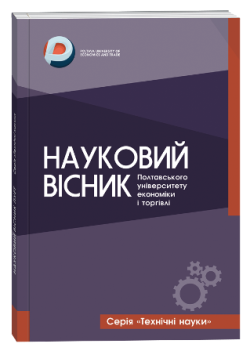BIOCHEMICAL COMPOSITION AND TECHNOLOGICAL ASPECTS OF PROCESSING AMARANTH GRAIN OF DIFFERENT TYPES
Abstract
Amaranth, due to its protein content, biologically useful compounds and healthy fats, is a promisingcrop for expanding the range of healthy food products, as well as the production of functional food products.However, the technological aspects of its processing and the influence of different types of seeds on biochemical indicators remain insufficiently studied. The development of scientific and practical foundations of a comprehensive, deep technology for processing amaranth grain is aimed at significantly reducing the deficit of protein and othervaluable substances in the diet of the population, at actively replacing other grain products with it and developingthe potential of the domestic agro-industrial complex. Comprehensive, deep processing of amaranth grain to obtain high-quality protein, protein-carbohydrate and protein-lipid products requires the development of theoretical andexperimental studies to substantiate the resources of preserving technologies based on maximum fractionation andpurification of the main biochemical elements. chemical potential of the starting raw materials.The work investigated the nutrient composition of amaranth of different types. It was found that light-colored grain has the highest concentration of protein and squalene, as well as increased oil content (5.97–8.23 %). Assessing biological effectiveness, the lipid complex of grain of different types was studied, comparing the composition of biologically active components. Analysis of the obtained data shows that white grain in terms of squalene content (8.30–8.70 %), sterols (4.40–4.80 %) and tocopherols (0.10–0.18 %) surpasses pink and black. Amaranth oil in terms of total tocopherol content approaches soybean oil, surpasses olive, peanut and sunflower oil (by 8.2; 3.0 and 2.5 times, respectively). The predominance of tocopherols with antioxidant activity in it (93 % of the total) increases the protective potential of the body, while preventing lipid oxidation. The results obtained will be used in the future in the study of the technology of deep processing of amaranth grains.
References
2. Kale, P. [et al.] (2022). Antioxidant profile of black amaranth. Open Agriculture Journal, (Vol 12(1), pp 45–53.)
3. Kaur, N., & Kaur, H. (2020). Comparative analysis of pseudocereals: Nutritional properties and health benefits. Nutrition Research Open. (Vol 8(3), pp 120–134.)
4. Singh, R., & Singh, S. (2021). Functional properties of millet in health food systems. Journal of Food Science and Technology. (Vol 58(4), pp 2001–2012)
5. Zhang, L. [et al.] (2019). Rutin and quercetin contents in buckwheat: Antioxidant capacity and functional applications. Journal of Agricultural Science and Technology. (Vol 21(3), pp 456–463) [in Ukranian].
6. Yaniuk, T., & Hriunvald, N. (2022). Vyrobnytstvo amarantu v Ukraini: stan i perspektyvy. Prodovolchi resursy. (Vol 10(18), pp. 179–192. Retrieved from https://doi.org/10.31073/10.31073/foodresou (accessed 02.03.2025). [in Ukranian].
7. Ruzhytska N. V., Syrotiuk I. V., Akimov O. V., Molchanov M. Iu. (2022). Protsesy kompleksnoi pererobky makukhy amarantu. [Processes of complex processing of amaranth cake]. Naukovi pratsi. Odeskyi natsionalnyi tekhnolohichnyi universytet. – [Scientific works. Odessa National Technological University]. (Tom 86, vyp. 1, pp. 112–118) [in Ukranian].
8. DSTU ISO 3596:2004 “Zhyry tvarynni i roslynni ta olii. Vyznachannia vmistu neomyliuvanykh rechovyn. Metod z vykorystanniam ekstrahuvannia dietylovym efirom”. [Animal and vegetable fats and oils. Determination of unsaponifiable matter content. Method using extraction with diethyl ether]. [in Ukranian].
9. DSTU EN ISO 9936:2019 “Zhyry tvarynni i roslynni ta olii. Vyznachennia vmistu tokoferoliv ta tokotryienoliv vysokoefektyvnoiu ridynnoiu khromatohrafiieiu”. [Animal and vegetable fats and oils. Determination of tocopherols and tocotrienols content by high-performance liquid chromatography]. [in Ukranian].
10. DSTU ISO 5509-2002 “Zhyry tvarynni i roslynni ta olii. Pryhotuvannia metylovykh efiriv zhyrnykh kyslot”. [Animal and vegetable fats and oils. Preparation of fatty acid methyl esters]. [in Ukranian].
11. DSTU ISO 5508-2001 “Zhyry ta olii tvarynni i roslynni. Analizuvannia metodom hazovoi khromatohrafii metylovykh efiriv zhyrnykh kyslot”. [Animal and vegetable fats and oils. Analysis of fatty acid methyl esters by gas chromatography]. [in Ukranian].
12. Kishchenko, V. A., Levchuk, I. V., Oseiko, M. I., Holubets, O. V., & Lytvynenko, O. A. (2013). Vyznachennia skvalenu – unikalnoho fitosterynu lipidiv metodom hazoridynnoi khromatohrafii [Determination of squalene – a unique phytosterol of lipids by gas-liquid chromatography]. Visnyk NTU “KhPI”. Seriia: Novi rishennia v suchasnykh tekhnolohiiakh – Bulletin of NTU “KhPI”. Series: New solutions in modern technologies. Kh : NTU “KhPI”. (11 (985). – pp. 137–141.) [in Ukranian].


